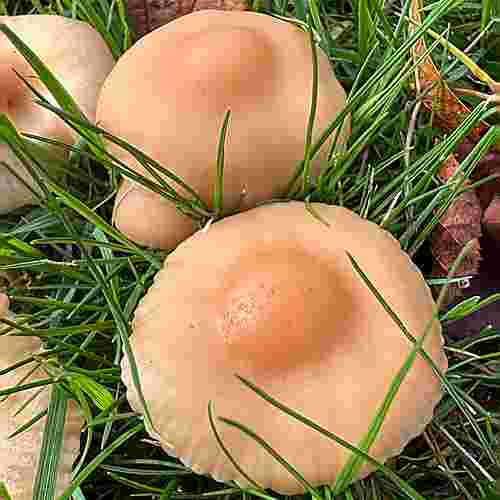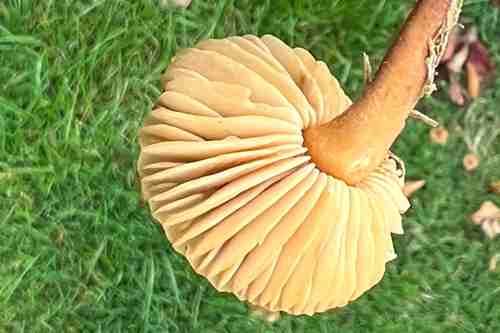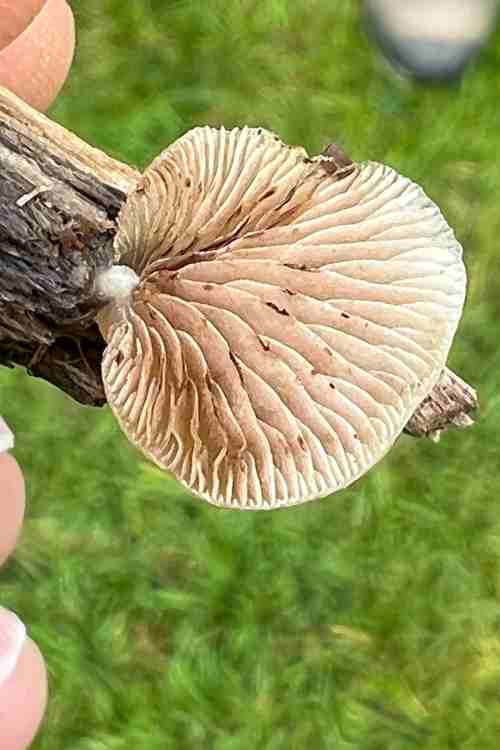Leaders: Rob Randall and Alan Rayner
Rob had first noticed the diversity of grassland fungi about a year previous and acted as leader, taking the party on a leisurely zig-zag path up the hill looking for the tell-tale signs of fungal mycelium. These were numerous patches of darker healthier-looking grass, mostly indicative of the symbiotic relationship between grasses and fungi, although some surrounded patches of White Clover, which has a symbiotic relationship with nitrogen-fixing bacteria.
Alan’s expertise was called on whenever the party came across something new. At first they were just common species like Pleated Ink-cap (Parasola plicatilis), Moss Bell (Galerina hypnorum) and Fairy-ring Champignon (Marasmius oreades), the last quite widespread, and unlike the other fungi, often associated with dying grasses. This fungus can survive desiccation and then soak up water again once it begins to rain (i.e. hygrophanous). It seems that during the hot dry summer it may have been getting sustenance from its associated grasses to the point that the grass could no longer cope with the dry conditions, even though the fungus survived.

Fairy-ring Champignon (Marasmius oreades) © David Hall

Fairy-ring Champignon (Marasmius oreades) © David Hall
The Champignon is edible, unlike the deadly poisonous Ivory Funnel (Clitocybe rivulosa) which was equally common and often growing nearby. After these the most common seemed to be Field Mushroom (Agaricus campestris) and two puffballs: Meadow Puff-ball (Lycoperdon pratense) and Grey Puff-ball (Bovista plumbea). Patches of small Bonnets (Mycena) were coming up, including Brownedge Bonnet (M. olivaceomarginata), with a dark edge to its gills, ‘Poached Egg’ Bonnet (M.flavoalba) with a white cap, yellow in the centre, and Yellowleg Bonnet (M. epipterygia) with a yellowish stem.

Peeling Oysterling (Crepidotus mollis) © David Hall
Waxcaps are often indicative of unimproved grassland but only one specimen of Snowy Waxcap (Hygrocybe virginea) was noticed. Amongst the unusual or less common species were Pink Domecap (Calocybe carnea), the Haymaker (Panaeolina foenisecii) and Blue Roundhead (Stropharia caerulea). A Pink-gill (Entoloma species) remained unidentified.
Sticks discarded by dogs provided a few species not associated with grass, including Peeling Oysterling (Crepidotus mollis) and Common Jellyspot (Dacromyces stillatus).
Rob Randall

Recent Comments